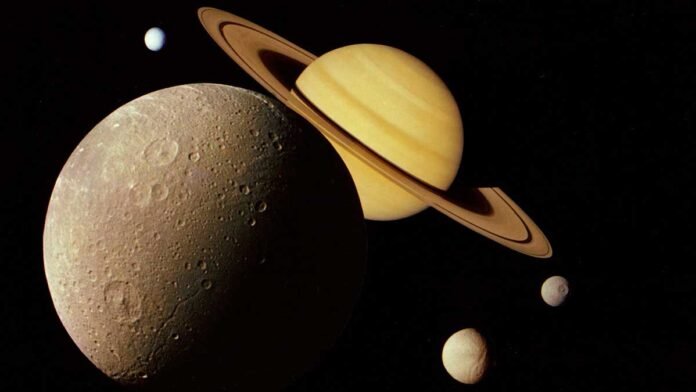Astronomers have discovered 62 new moons orbiting Saturn, bringing the total number of moons known to orbit the planet to 102. This makes Saturn the first planet in our solar system to have over 100 moons. The new moons are all very small, ranging in size from a few meters to a few kilometers across. They are thought to have formed from debris left over from a collision between two moons.
The new moons were discovered by a team of astronomers led by Scott Sheppard from the Carnegie Institution for Science. The team used the Subaru Telescope in Hawaii to make the discovery. They were able to find the new moons by looking for small changes in the brightness of Saturn as the moons passed in front of it.
The new moons are all very faint and difficult to see. They are only about 10 to 20 meters in diameter. The team was able to find them by using a technique called adaptive optics. Adaptive optics uses a computer to correct for the blurring caused by the Earth’s atmosphere. This allowed the team to see much fainter objects than they would have been able to see otherwise.
The new moons are all located in the outer reaches of Saturn’s rings. They are thought to have formed from debris left over from a collision between two moons. The collision would have broken up the moons into smaller pieces, which then coalesced to form the new moons.
The discovery of the new moons is a significant addition to our knowledge of Saturn. It shows that the planet is even more complex than we thought. It also raises new questions about the formation and evolution of Saturn’s moons.
The team of astronomers is continuing to study the new moons. They are trying to learn more about their size, composition, and orbit. They are also trying to determine how they formed.
The discovery of the new moons is a reminder of how much we still have to learn about our solar system. It is also a reminder of the power of modern astronomy. With new technologies, astronomers are able to discover objects that were previously invisible. This is helping us to better understand our universe.





